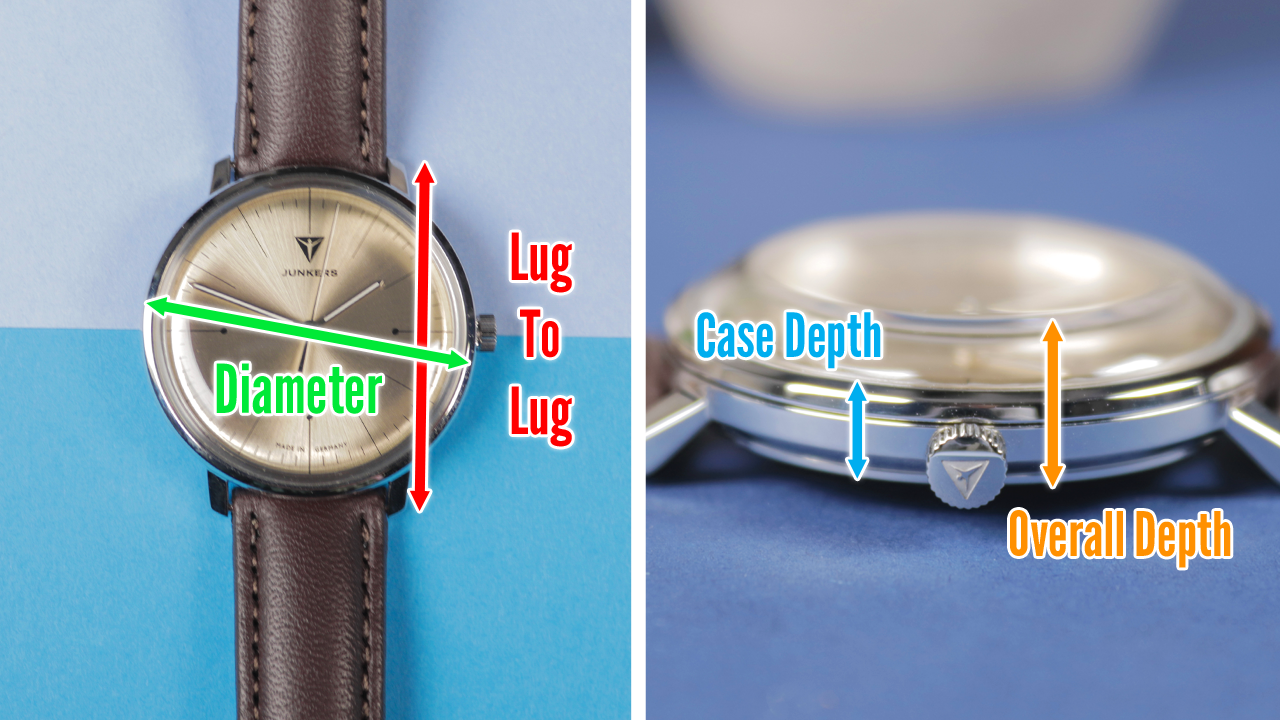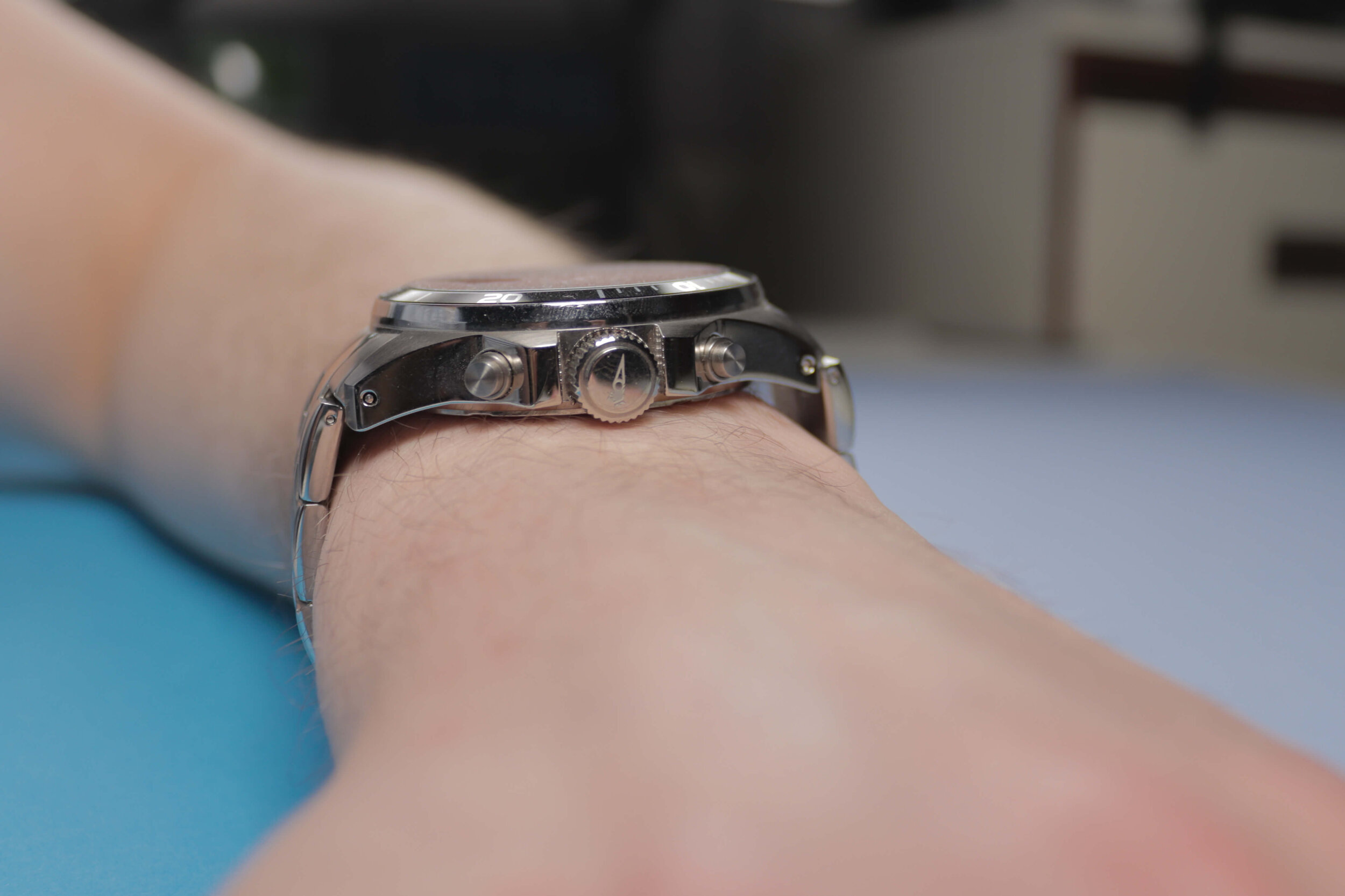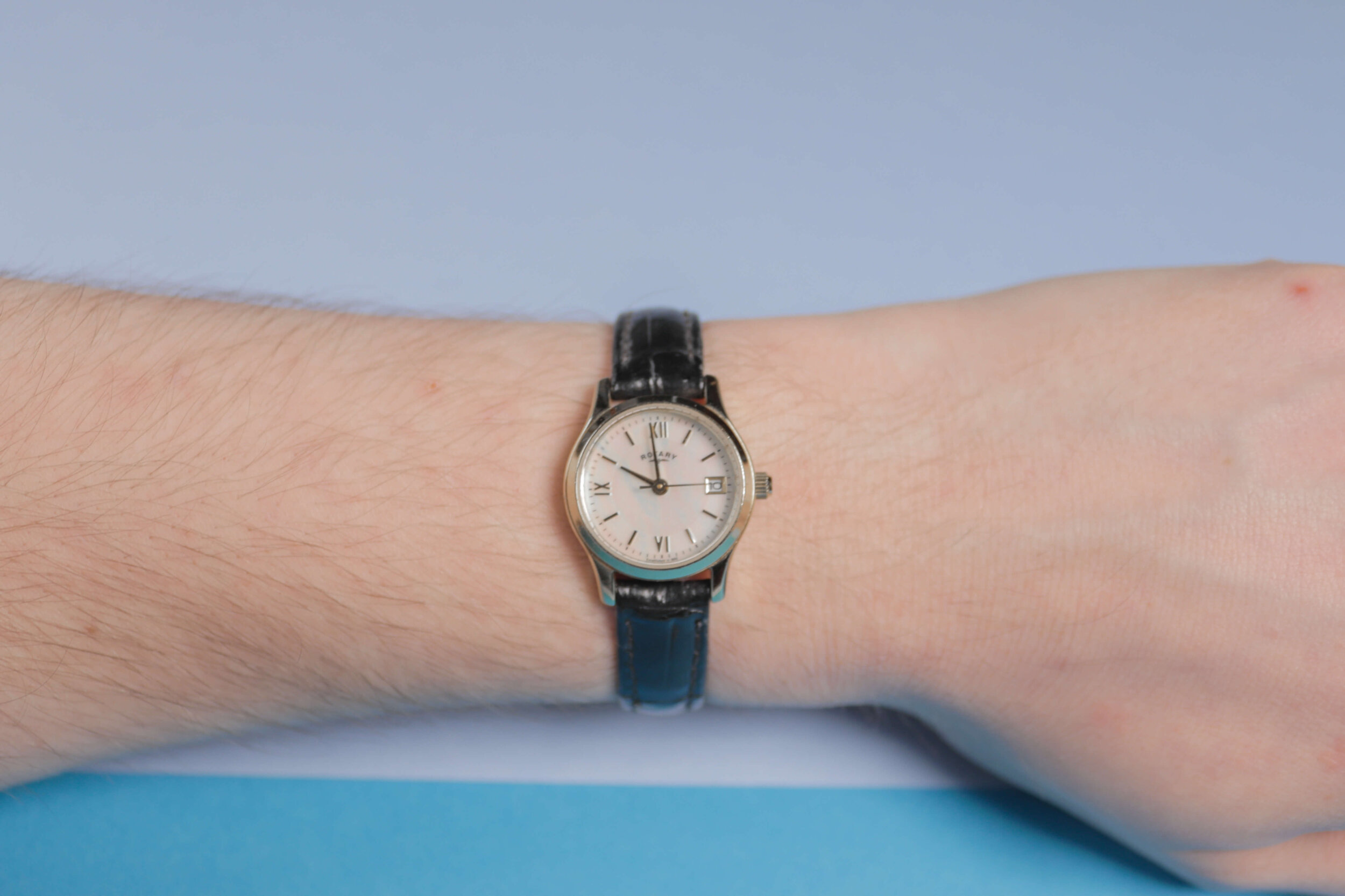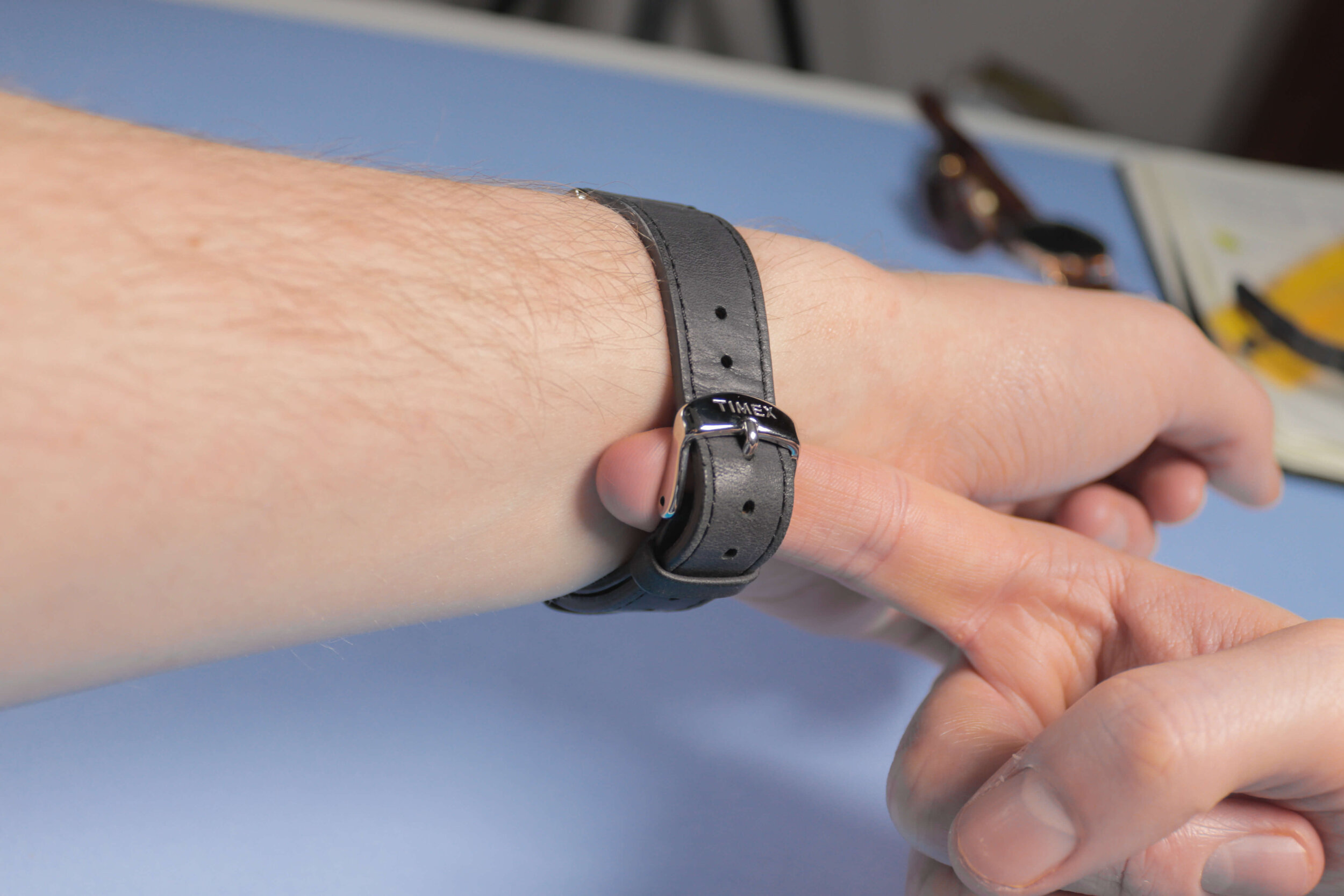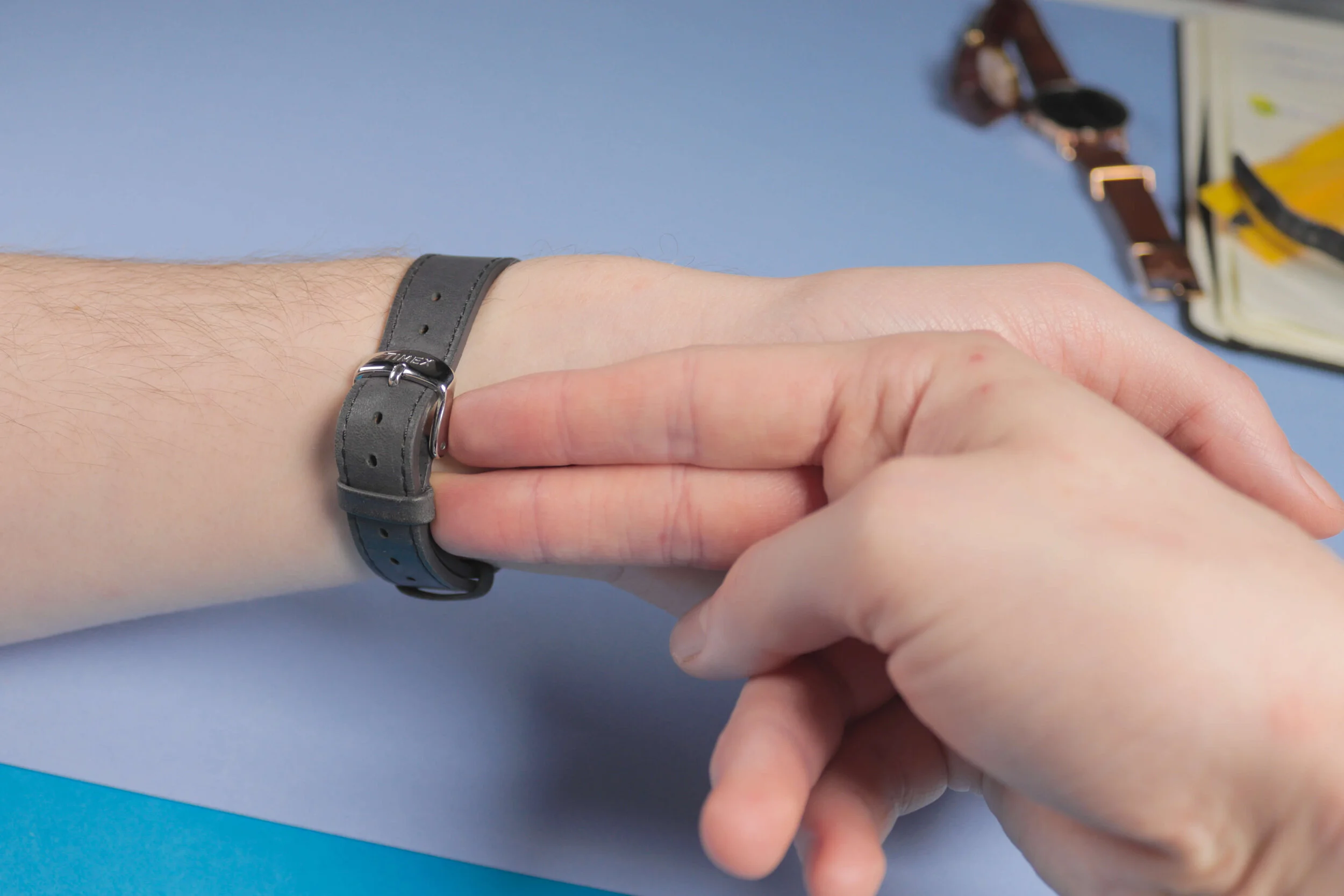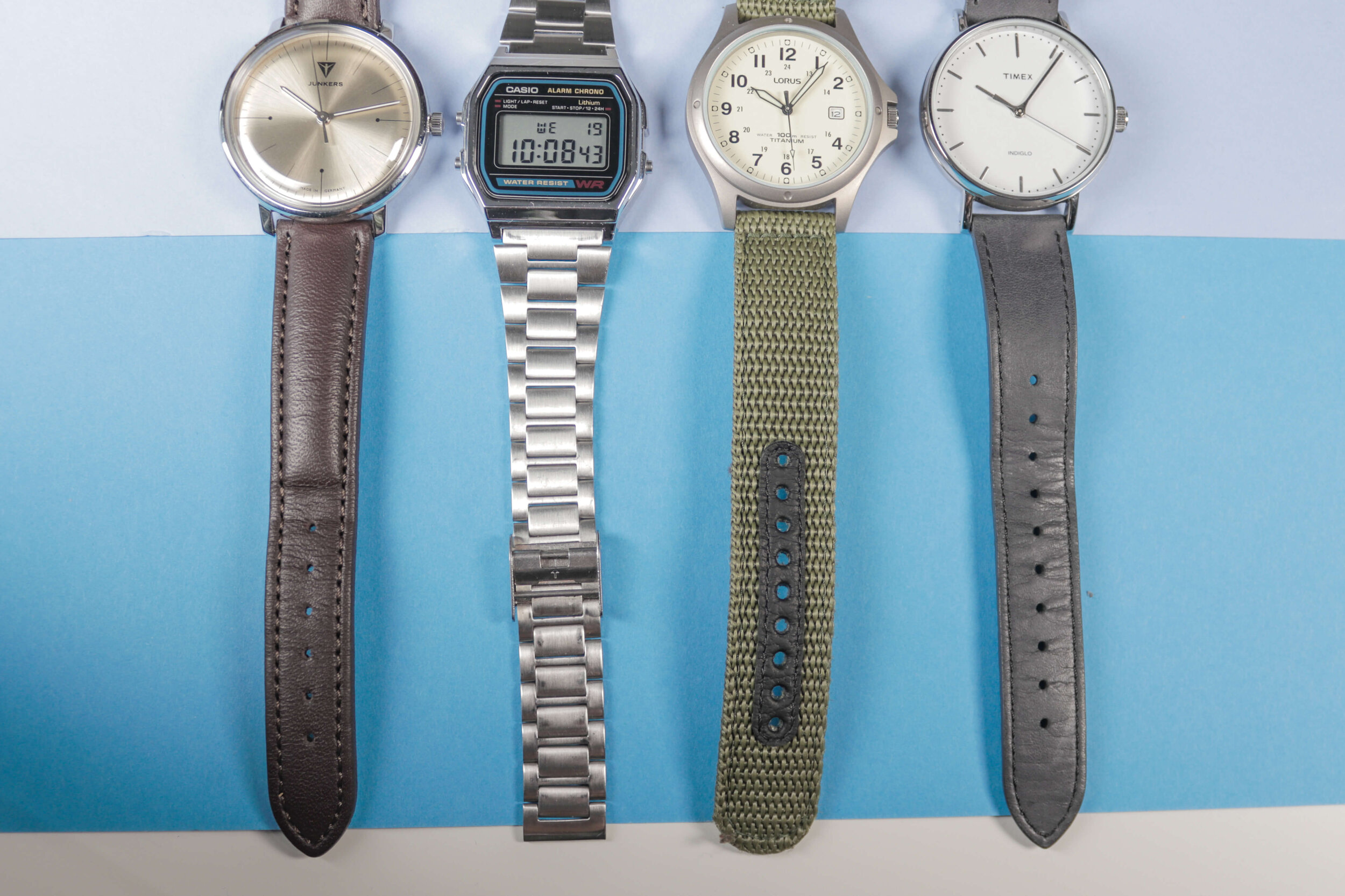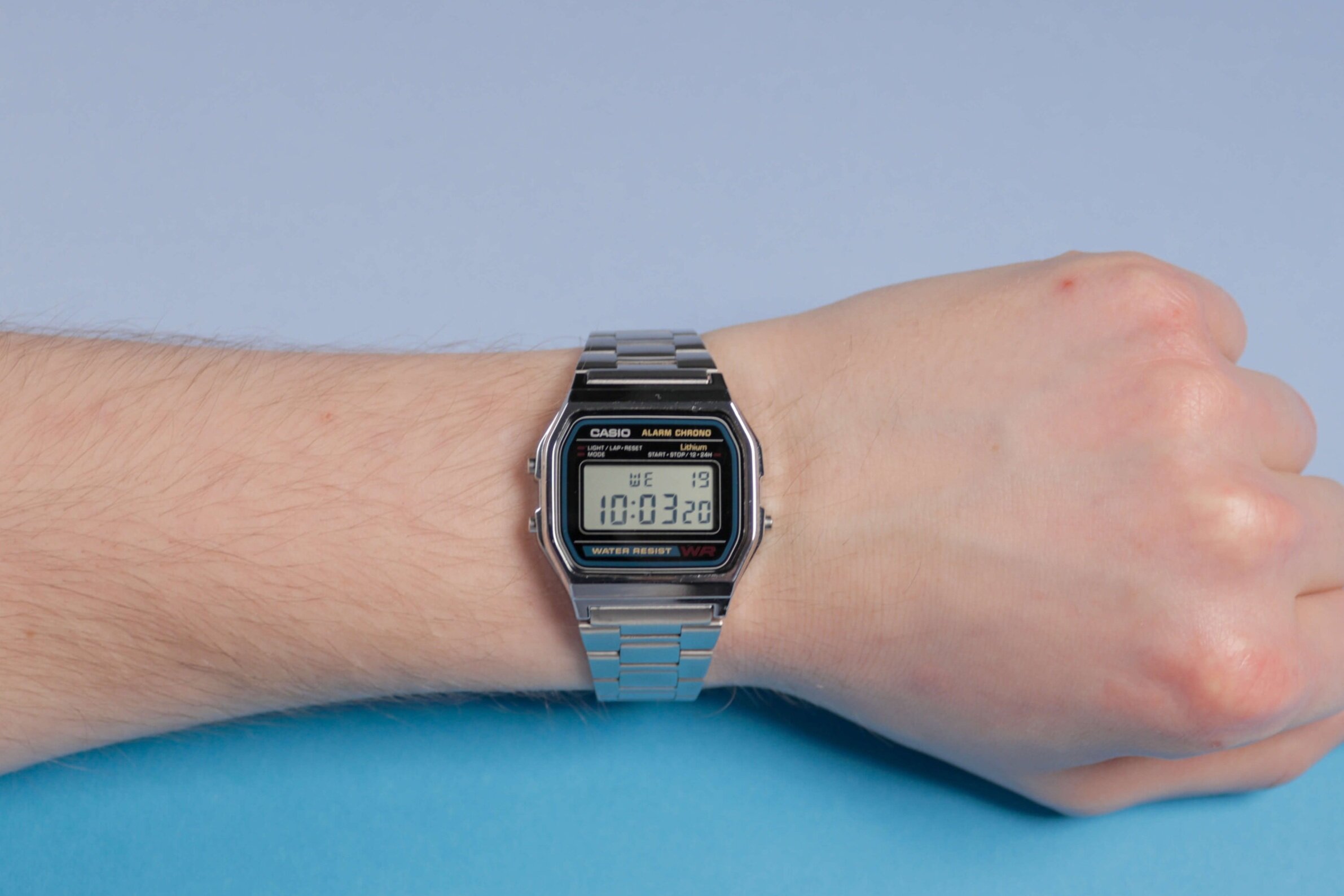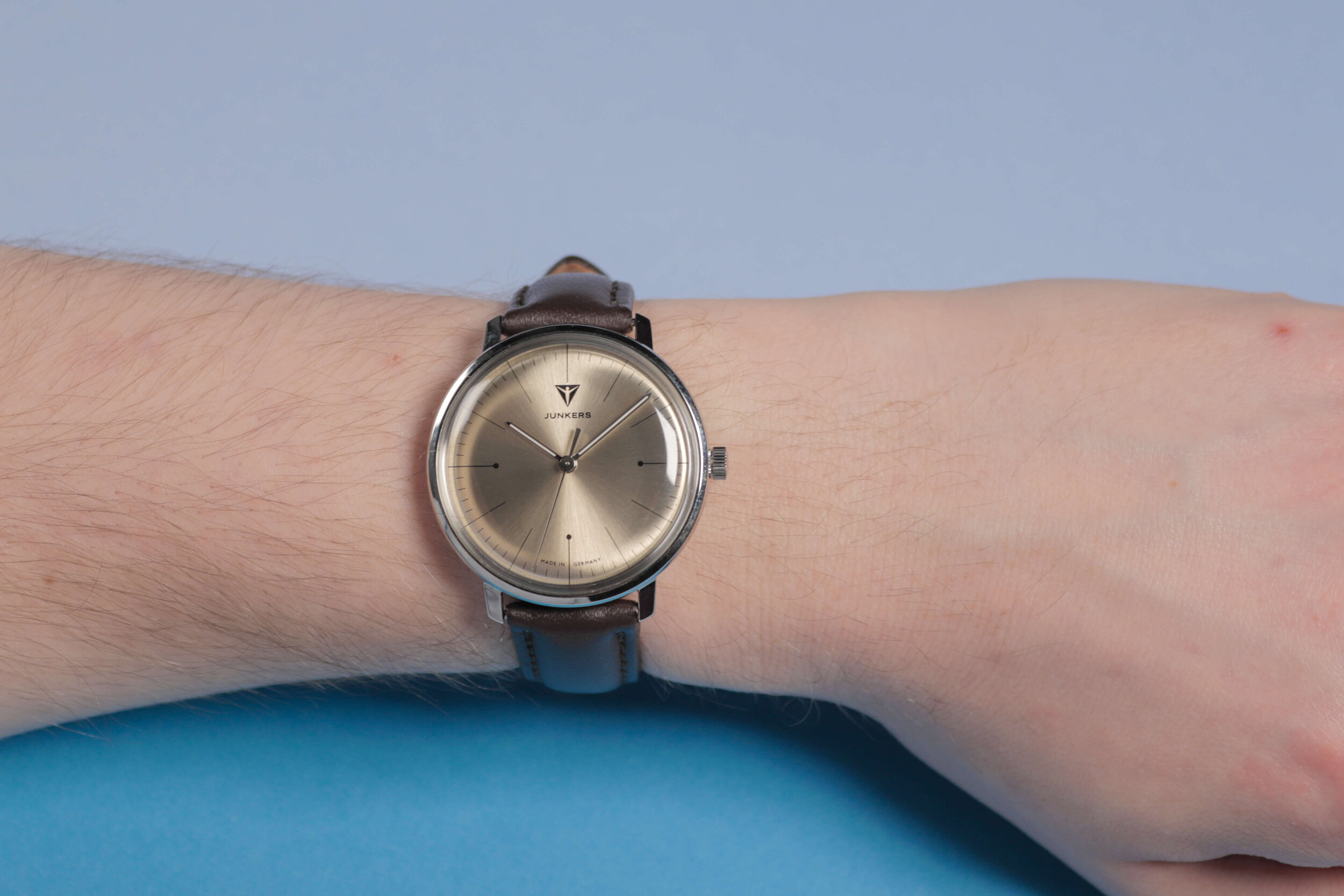How Should A Watch Fit? A Watch Guide For Beginners
When it comes to choosing a wristwatch, a question that often comes to mind is how should a watch fit? How tight should a watch be and what size should you go for?
In this guide, I’ll give you a clear idea of what to aim for and how you can improve the fit of your existing watches.
A watch should fit tightly enough to prevent the watch sliding around on the wrist during movement, yet loose enough so it doesn’t leave any notable imprints. It’s also important to consider other factors such as the case dimensions; especially when shopping online.
While the above description may seem fairly impartial, it’s important to point out that there is some subjectivity when it comes to wristwatch fit. Some people like their watches to fit securely, whilst others prefer them slacker; so bear that in mind.
For a watch to look its best, the piece must also look in proportion with your wrist size. This means there is no ‘one size fits all’; hence the production of this guide.
Watch Case Size Guide
Wristwatches are built in a variety of shapes and sizes, meaning some suit certain wrist sizes better than others. Choosing the wrong size can leave you with a piece that either dominates your arm or sits there like a tiny child’s watch. There are certain proportions to keep your eye out for:
Case Diameter: This is the measurement from one side of the watch to the other, not including the crown (unless stated otherwise).
Case Depth: The depth of the watch. This figure may be influenced by factors like domed glass, which can artificially increase the depth of the watch.
Lug-To-Lug Size: Arguably the most crucial proportion to consider, the lug-to-lug size is often the largest measurement on a watch. This is the measurement from the tip of one lug to another lug on the other side of the case. This gives a real idea of how the watch will sit on your wrist.
Measure your wrist circumference using some tape, then take a look at these recommended sizes:
Wrist Under 6 Inches
Ideal diameter: 38mm or under
Ideal Lug to Lug: Under 42mm
Ideal Depth: Under 10mm
6-6.75 Inch Wrist
Ideal Diameter: 36mm to 40mm
Ideal Lug To Lug: Under 46mm
Ideal Depth: Under 12mm
6.75-7.5 inch Wrist
Ideal Diameter: 40mm to 44mm
Ideal Lug To Lug: Under 50mm
Ideal Depth: Under 14mm
>7.5 Inch Wrist
Ideal Diameter: 42mm and over
Ideal Lug To Lug: Over 46mm
Ideal Depth: Over 10mm
Some notable styles of watches trend towards a certain size:
Dress watches tend to be slimmer than average, to slip under shirt sleeves
Dive watches tend to be thicker than average, as they are built to withstand high water pressure
Chronographs tend to be larger than average, to accommodate multiple subdials
Quartz watches are often thinner than mechanical watches, due to the movements being smaller and less complicated
Square/rectangular watches tend to have a substantially slimmer width, in such cases the lug to lug size is the one to prioritise
Signs your watch is too large:
The lugs extend to the edges of your wrist or past them.
When seen from the side, the lugs have significant space between them and the wrist (i.e. they are raised).
The watch depth is equivalent to 20% of your natural wrist depth or larger.
Signs your watch is too small:
The lugs are 1cm or further from the edges of your wrist. Nevertheless, this is subjective. Many men believe small watches still look great and will happily wear them – much more so than with large watches.
Watch Strap Size Guide
When it comes to sizing your strap of choice; comfort is king. Having a super-tight watch is a no-no. Nevertheless, having a very loose watch can be equally as uncomfortable and can also look sloppy.
A good amount of watch slack should allow for one finger to slide between the strap and wrist easily; without allowing two fingers to fit in the same space comfortably.
How can you get this perfect fit?
Consider adding or removing links
If you have a bracelet, you may need to adjust it. This could mean removing or adding links, to make the size more appropriate. You can either do this yourself or visit a jeweller who should be able to do this for you.
Check for micro-adjustments
Many watch bracelets will also include ‘micro-adjustments’ on the clasp. These are tiny slots that you can utilise to make fractional adjustments to the size of the bracelet. You can use a simple tool or pin to push these to the desired segment. The number of adjustments varies across different bracelets. Some may not have any at all.
Consider swapping the band for an alternative
Sometimes, changing the band may be the only option. This may be particularly true if you have a thin wrist, where a leather strap or metal bracelet might not adjust to a viable size. I wouldn’t recommend punching extra holes in a leather strap, as this can end up compromising the appearance and durability of the strap over time. If you are considering a new strap, make sure you get one that is the correct size for your wristwatch.
Will A Strap Fit My Watch Properly?
Watch straps come in several basic sizes; based on their width. Unfortunately, watches come fitted with lugs that are a set size, so switching between straps of different widths isn’t practically possible. You may be able to switch to a narrower strap, but you will be left with excess space, making the pins visible (if they fit at all).
Common lug widths/strap sizes for men’s watches include 18mm, 20mm, 22mm and 24mm. Most straps will be available in each of the above sizes, though certain watches may require more obscure lug widths like 21mm; for which, straps may be harder to find. If you don’t have a pair of callipers to measure, the lug width will normally be listed on the watch retailers website.
What Is The Best Watch Strap Width For Your Wrist?
As with other watch dimensions, smaller widths look more in proportion with smaller wrists (and vice versa). Nevertheless, as previously discussed, the manufacturer will determine the strap size anyway – as they manufacture the lugs.
Wrists under 7 inches tend to suit 20mm straps or under, whilst wrists over 7 inches can look good with larger straps, 22mm or over.
Some watch bands are tapered, meaning they become narrower approaching the holes or clasp. This is more commonly found on dress watches and can help to make a watch look more diminutive on the wrist when compared to chunkier bands. Interestingly, metal bracelets also tend to look bulkier than their leather counterparts. While both factors are minimal, it helps to be aware of them.
Common Watch Fit Questions Answered
Should A Watch Leave An Imprint?
Generally, no. While a light imprint may be okay, if your watch leaves deep marks on your wrists, it’s too tight. If you feel this tightness is required to prevent the watch from rotating around your wrist; the real problem may be either the strap or the size of the case. It may be worth experimenting with other straps or different sized watches to find a comfortable fit.
Watch Above or Below Wrist Bone?
This one is up to personal preference. I tend to like wearing my watch below the wrist bone (closer to the elbow) as this is the slimmest point on my arm; meaning when tightened appropriately, the watch is less susceptible to movement. Nevertheless, if you have thicker arms, this may not be the case and wearing your watch above the bone (closer to the hand) may be a better option.
One piece of advice that I will give is that smaller profile watches tend to suit the ‘above wrist bone’ position better than larger watches, as they dig into your hand less when moving your hand. Larger watches may become uncomfortable in such a position.
Additionally, consider shifting the position based on the occasion. If you plan on wearing a slim-fitting formal shirt, placing the watch closer to your hand may be the better choice, to prevent the shirt cuffs from buckling and folding against the case.


